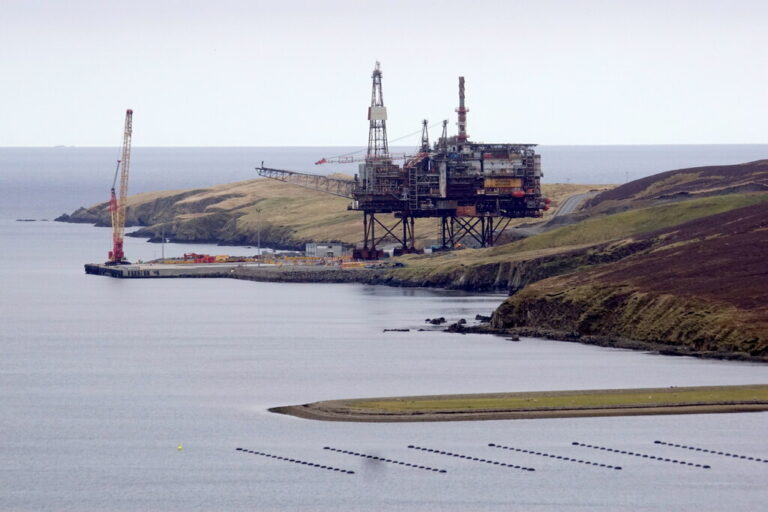Optimal climate policy as if the transition matters

Download
While there is broad agreement that emissions should fall from their current record levels to very low levels eventually, how best to make the transition from a high- to low-carbon economy remains open for debate. Making the transition involves complex dynamics that go beyond basic models of emissions abatement and it is these dynamics that the authors aim to analyse with the model they develop in this paper.
The optimal transition to a low-carbon economy must account for adjustment costs in switching from dirty to clean capital, technological progress, and economic and climatic shocks. The authors study the low-carbon transition using a model with emissions abatement costs calibrated on a large energy modelling database.
Most industrial capital, such as power plants, steel mills and cement factories, is based on fossil fuels. Rapid abatement of greenhouse gas emissions comes with an extra cost, because the existing infrastructure needs to be repurposed or set aside (‘stranded’). By contrast, more gradual abatement is cheaper, because green infrastructure can be installed after the dirty infrastructure comes to the end of its life.
The authors show that it is optimal to repurpose and strand a substantial amount of capital. However, capital inertia leads to significant emissions in the short run. Conversely, progress in developing clean technologies such as renewables, as well as uncertainty about climatic and economic factors, lead to lower emissions and temperatures in the long run. Putting these factors together, the authors estimate a net premium of 33% on the optimal carbon price today relative to a ‘straw man’ model with perfect capital mobility, fixed abatement costs and no uncertainty.
Key points for decision-makers
- The authors develop a dynamic stochastic general equilibrium model. It exhibits three key features that have not been studied in a single model before. First, it includes limits to how fast emissions can be reduced through adjustment costs to clean capital accumulation and dirty capital disinvestment. Second, it incorporates the widely observed phenomenon of falling clean technology costs, which are partly autonomous/exogenous and partly induced. Third, it incorporates multiple sources of uncertainty, including the business cycle, climate variability, and rare macroeconomic shocks made more likely by climate change.
- The authors find the optimal transition to a low-carbon economy is fast. From 2020 to 2030, emissions are roughly halved, whether the economic planning problem is to maximise the discounted net benefits of emissions reductions or to limit warming to 1.5°C at the lowest discounted abatement cost. Either way, a high carbon price is required, as is active stranding of dirty assets (such as coal-fired power stations), rather than working with the grain of capital depreciation. If the imposition of a carbon price is delayed and its eventual introduction is not anticipated, even more dirty assets are stranded.
- Disentangling the effects of capital inertia, progress in developing clean technology and uncertainty, the authors show how adjustment costs prevent an implausibly large optimal shift from dirty to clean capital initially, and how capital inertia therefore results in temperature inertia and higher carbon prices.
- Falling costs of clean technology lead to lower optimal emissions and temperatures in the long run, while also allowing for modestly lower optimal carbon prices all along the path. Exogenous technological change, which develops independently of climate policy, decreases the optimal carbon price, because postponing abatement makes it cheaper. By contrast, endogenous technological change, which is the result of climate change, has an ambiguous effect on optimal carbon prices, because early abatement accelerates the development of cheap abatement technology.
- Uncertainty, especially in terms of temperature-related macroeconomic disaster risk, leads to an ‘insurance effect’ in the form of lower optimal emissions and temperatures.
- Putting these three effects together, the authors estimate a net premium of 33% on the optimal carbon price today relative to a ‘straw man’ model with perfect capital mobility, fixed abatement costs and no uncertainty. The premium falls to about 20% by 2050. Higher prices pay off in terms of lower temperatures, but only in the long run, specifically the second half of this century, because of capital inertia.
- Lastly, the authors compare two different ways to stay below a temperature limit like 1.5°C: (i) maximising discounted net benefits of emissions reductions, and (ii) minimising discounted abatement costs. Ignoring climate damages leads the planner to put off – or ‘back-load’ – emissions reductions. The authors estimate the optimal carbon price is 13% lower initially. Since climate damages are not zero, the authors conclude the latter approach underestimates optimal carbon prices.

